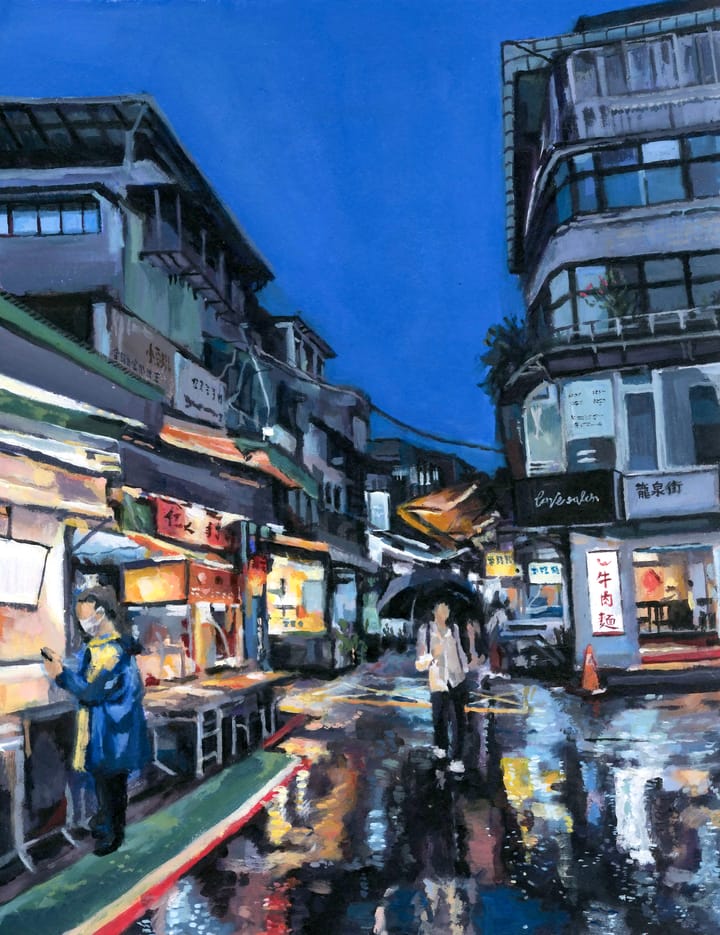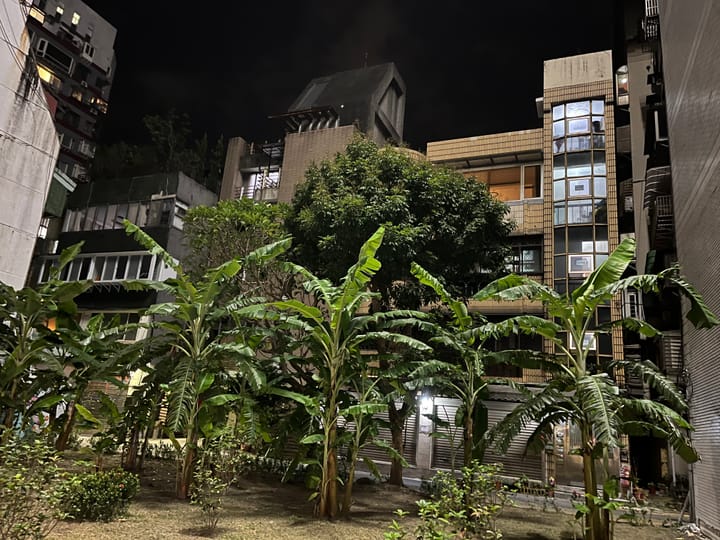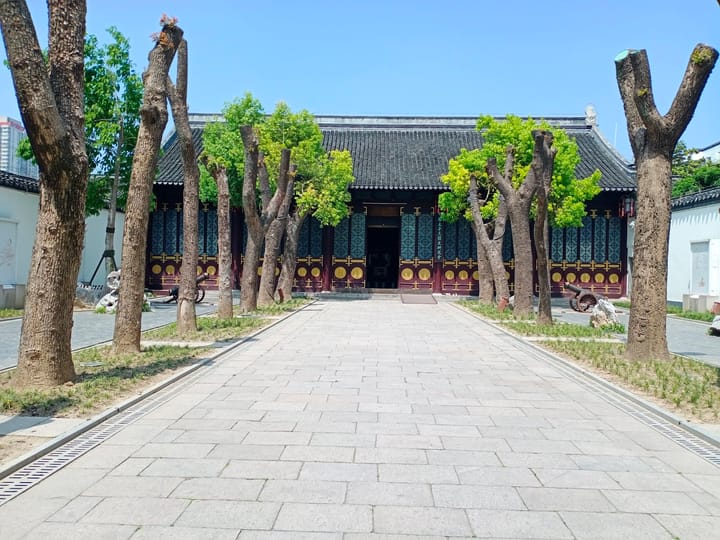#6 Why Do We Come to This Place?
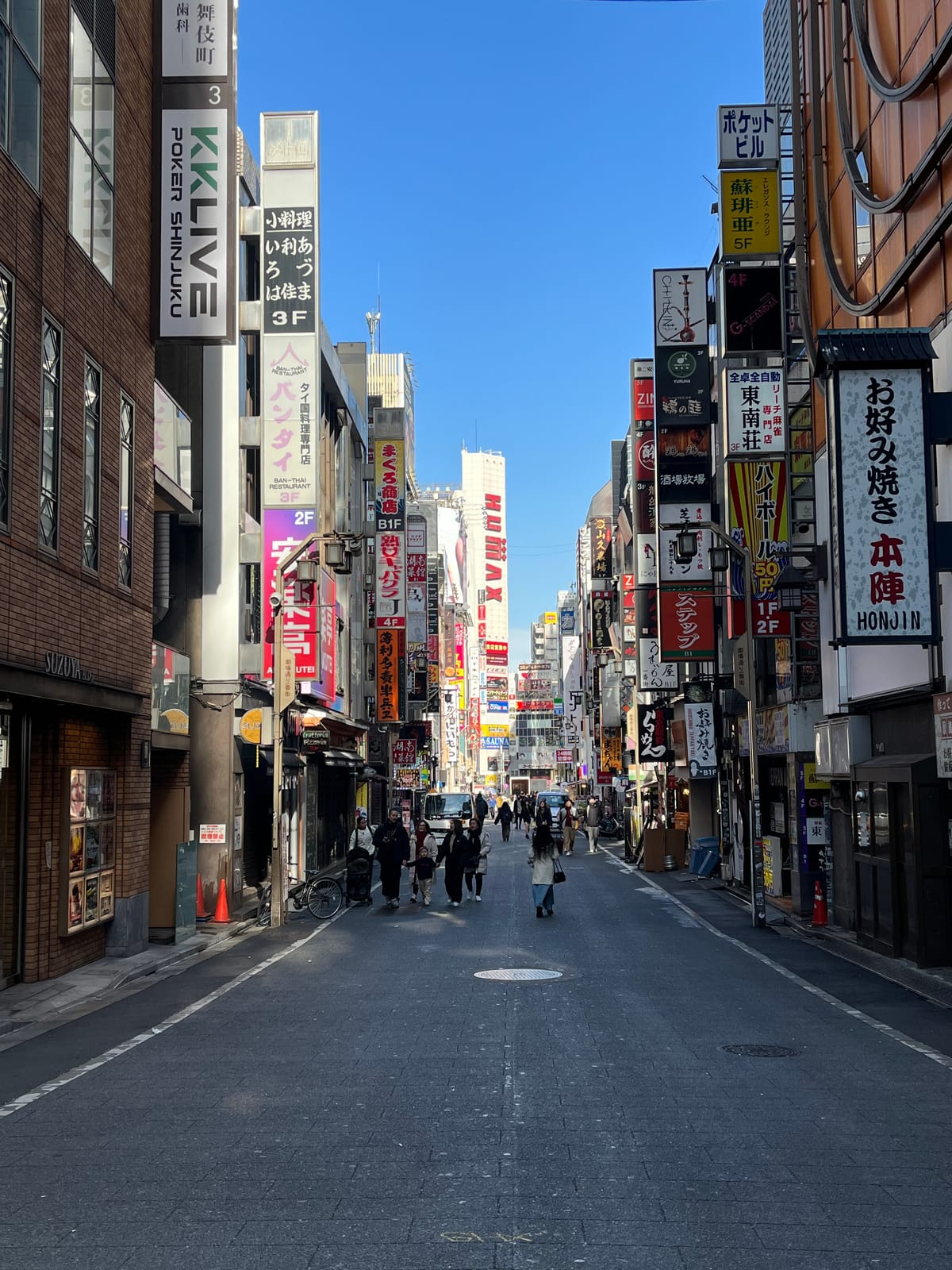
Happy Holidays, everyone! Here in Taiwan, where I'm writing this newsletter against the backdrop of a quintessential Taipei downpour, I've been on winter break for the past two weeks. And yesterday, I came back from eight days in Japan, a trip I'd had high up on my bucket list since I was a kid.
It was an amazing time—full of many laughs with friends, so many good meals, and plenty of reminders that it helps to be in a country where you can actually speak the language. (God bless the patience of all the Japanese service workers I encountered.)
I want to start this edition on a more somber note, detailing a day-trip I took to Hiroshima. Depending on your bandwidth, feel free to skip ahead to the sections further down, where things get much, much lighter (but, unfortunately for some of you, much, much more Philly-centric).
I hope you are having a terrific holiday season wherever you are and look forward to being back in your inbox in 2024.
Let's get into it:
Reflections on a Trip to Hiroshima
Barack Obama, for all his many faults, knew damn well how to give a speech. Everyone knows the one that catapulted his political career—from the 2004 Democratic National Convention—about there being no "red states" and "blue states."
But for my money, Obama's most memorable speech came on May 27, 2016. Standing next to Japanese Prime Minister Abe Shinzo, Obama became the first U.S. president to visit the atomic bomb memorial in Hiroshima. "Why do we come to this place, to Hiroshima?" he asked.
Last week, I stepped off a bullet train less than two miles from where Obama stood, and asked myself the same question.
No museum tour or set of photographs can communicate the horror of what happened in this place. As I walked around Hiroshima Peace Memorial Park, reading inscriptions about thousands of people, all dead in an instant, I was left thinking of lines from a poem by Horace Smith:
He meets some fragment huge, and stops to guess
What powerful but unrecorded race
Once dwelt in that annihilated place.
It takes some gargantuan strength of will to not cry as you inspect each statue and plaque in the park, reading about the children whose lives are memorialized by hundreds of paper cranes, or the people inside an exhibition hall who were vaporized by the blast. That building still stands in a perpetual state of ruin, a conscious decision by the Hiroshima city government as a symbol of the bomb's enduring legacy.
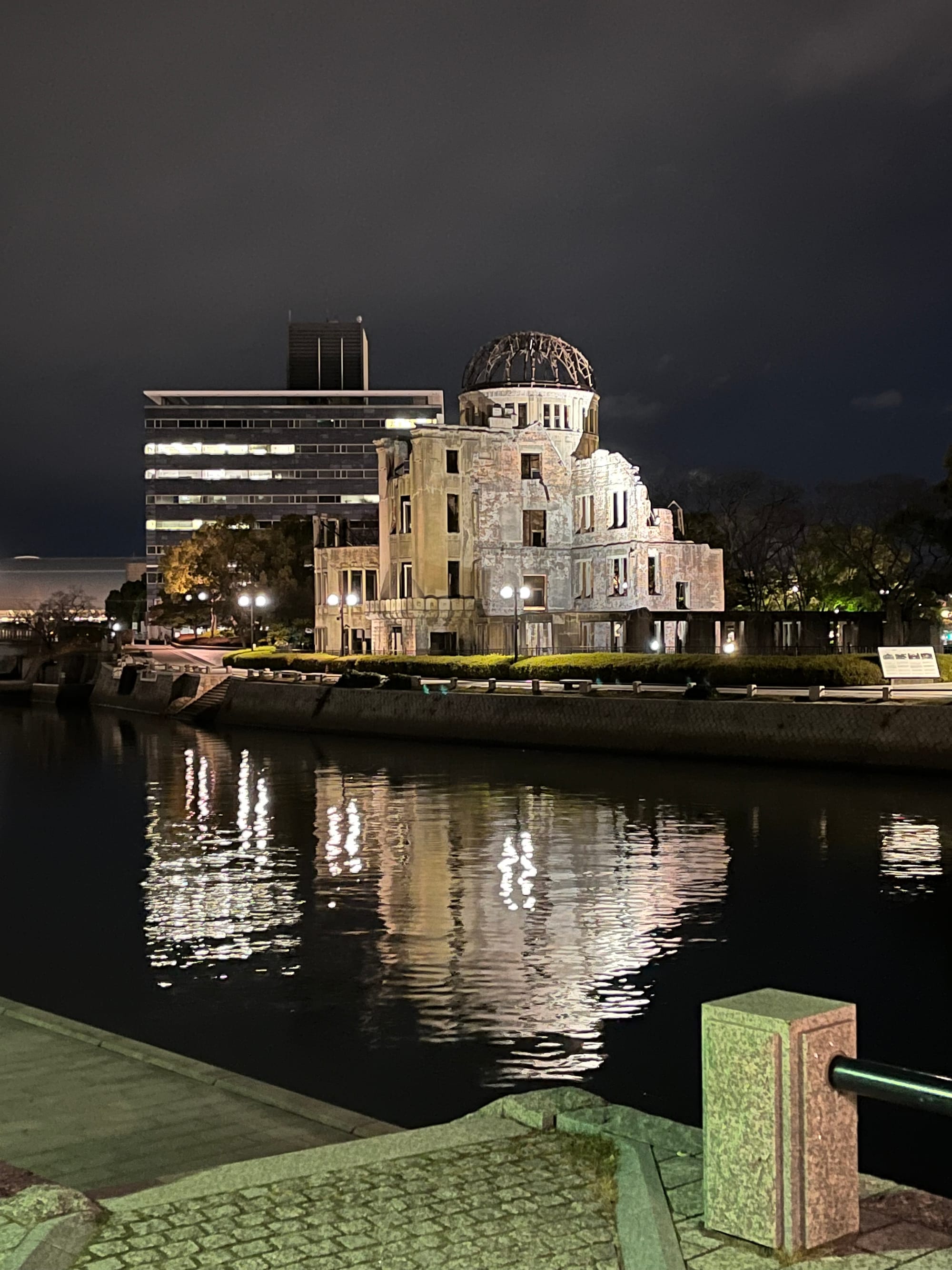
Hiroshima is a tragedy with many authors. Japan's imperialist, belligerent leaders invited war through their attempt to dominate Asia and, as Koreans and Chinese know all too well, the Japanese military's wartime conduct was nothing less than abominable. As for the United States, the justification at the time (and what most American students know from history class) is that the bomb saved lives by spurring Japan to surrender before a bloody invasion of the Japanese mainland. (Obama, pointedly, did not apologize during his speech for the U.S. decision to drop the bomb.)
A structure in the memorial, which lists the names of the bomb's victims, gestures at this ambiguity by stating, "Rest in peace, for the error shall not be repeated." Whose error, we don't know.
This history matters—and we forget it at our peril—but I will admit that while in Hiroshima, the sense of lives lost dwarfed any sense I had of the historical context. Hiroshima's tragedy has many authors, but it's still a tragedy. No matter the context, we can and still mourn what the bomb did, creating this "annihilated place."
The difference, of course, is that Hiroshima is not forgotten. Its people and their way of life endures. It remains a thriving city. Mere steps from the memorial are cafes, izakayas, and no shortage of hotels (likely catering to foreign tourists like me). Just before I visited the memorial, I ate the best food I had in all my time in Japan—ramen from a delightfully small shop called "Okkundou Mazemen."
Despite my inability to speak any Japanese beyond "arigato gozaimasu" (thank you) and "sumimasen" (sorry), I managed to stumble through a conversation with the chef about my life in Taiwan and my background in the United States. After the meal, we took a picture:
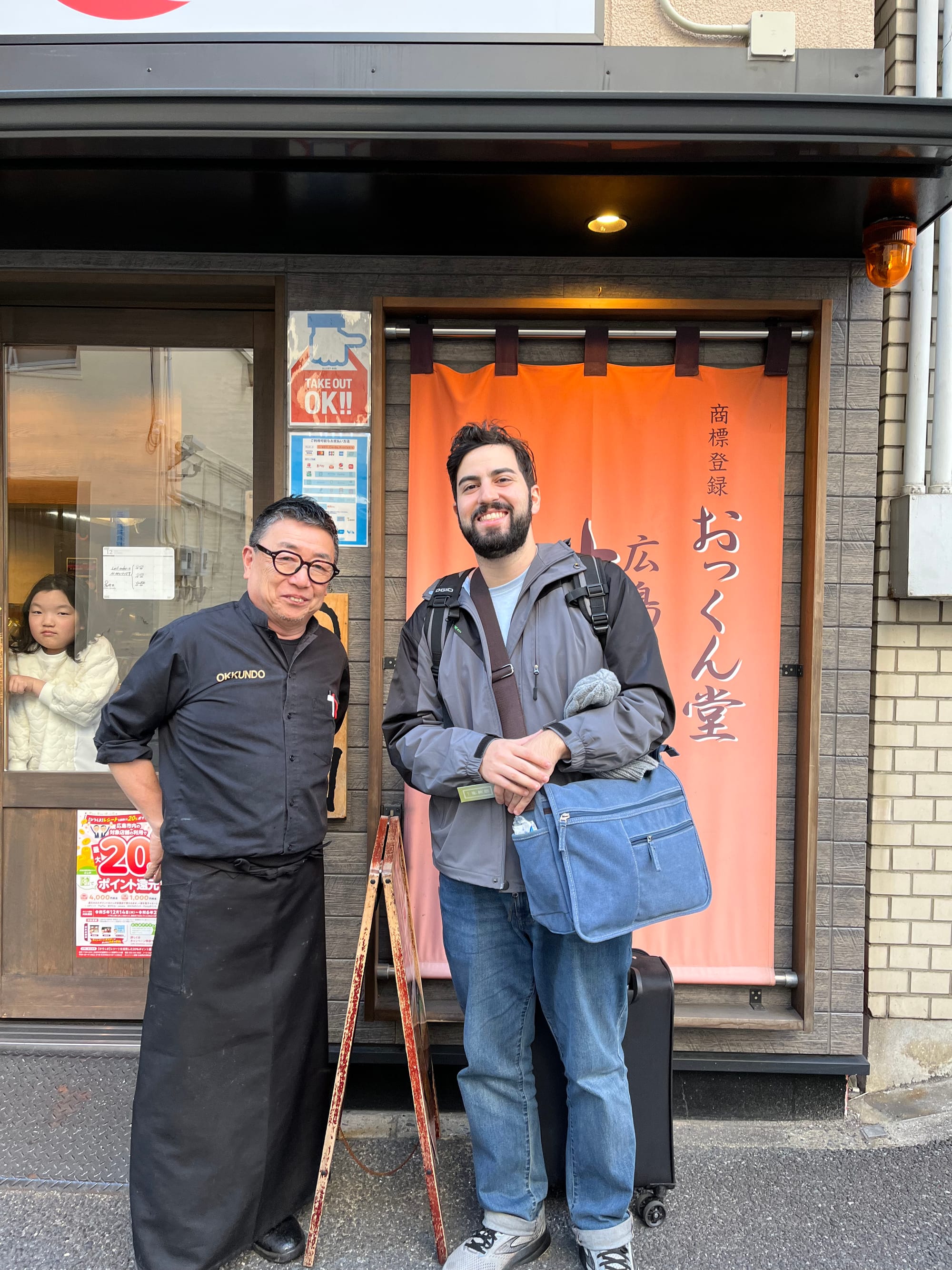
I'll always remember this memory and the joy I felt. I didn't come to Hiroshima looking for some profound revelation or a deeper understanding of the horror of war. I need only read the news to find that. I came simply to try to understand this history that so deeply informs our shared human experience. I left with a full stomach and some new friends.
One More Thing About Hiroshima:
If you are interested in reading more about Hiroshima, I can think of no better work than John Hersey's classic New Yorker article, "Hiroshima," which he wrote months after the bomb dropped.
His reporting details the story of several survivors, all of whom he manages to record with an incredible amount of detail. It is a long article—in fact, it took up an entire New Yorker issue—but most striking, all those years later, is its ending. I'll simply just put it here in its entirety:
It would be impossible to say what horrors were embedded in the minds of the children who lived through the day of the bombing in Hiroshima. On the surface their recollections, months after the disaster, were of an exhilarating adventure. Toshio Nakamura, who was ten at the time of the bombing, was soon able to talk freely, even gaily, about the experience, and a few weeks before the anniversary he wrote the following matter-of-fact essay for his teacher at Nobori-cho Primary School: “The day before the bomb, I went for a swim. In the morning, I was eating peanuts. I saw a light. I was knocked to little sister’s sleeping place. When we were saved, I could only see as far as the tram. My mother and I started to pack our things. The neighbors were walking around burned and bleeding. Hataya-san told me to run away with her. I said I wanted to wait for my mother. We went to the park. A whirlwind came. At night a gas tank burned and I saw the reflection in the river. We stayed in the park one night. Next day I went to Taiko Bridge and met my girl friends Kikuki and Murakami. They were looking for their mothers. But Kikuki’s mother was wounded and Murakami’s mother, alas, was dead.”
A Philly Interlude in Japan:
As I mentioned in my last newsletter, Tokyo has a Philly-themed restaurant! You may have seen this tweet, which went massively viral and made Nihonbashi Philly into a bit of a tourist destination:
In Tokyo there is a Philadelphia themed bar, which was set up because the guy who runs it loved Philadelphia soul music, and wanted to set up place that only played that. Eagles games on the TV, cheesesteak on the menu. pic.twitter.com/IL6UxwcFHu
— Mike Bird (@Birdyword) November 27, 2023
Well, if you know me at all, you know that I had to make time to go there. Friends, it is good! Like, really good! Not only is the decor top-notch—they somehow managed to get SEPTA glasses—but the whole vibe of the place feels very much like a South Philly dive bar. The cheesesteak itself was excellent. Though I'm not a Whiz guy, they use a perfect amount. But, the real surprise was in the quality of the bread, which slots right in with some of the best sandwich bread I've had.
What made Nihonbashi Philly even more charming was the evident zeal of its proprietors for all things Philly. (They even told me that they're flying to Philly next week to see an Eagles game and sample cheesesteaks for research.) It was impossible to not fall in love with this place—unless you're from Boston or Dallas, I suppose!
The Most Popular Person in Taiwan:
No, I'm sorry to report, it's not me! It certainly is not one of the presidential candidates, all of whom seem to be trudging along with only a slice of the electorate's support. Based on my limited sample size of living here for five months, I'd venture to say it's this pink, fuzzy bear:
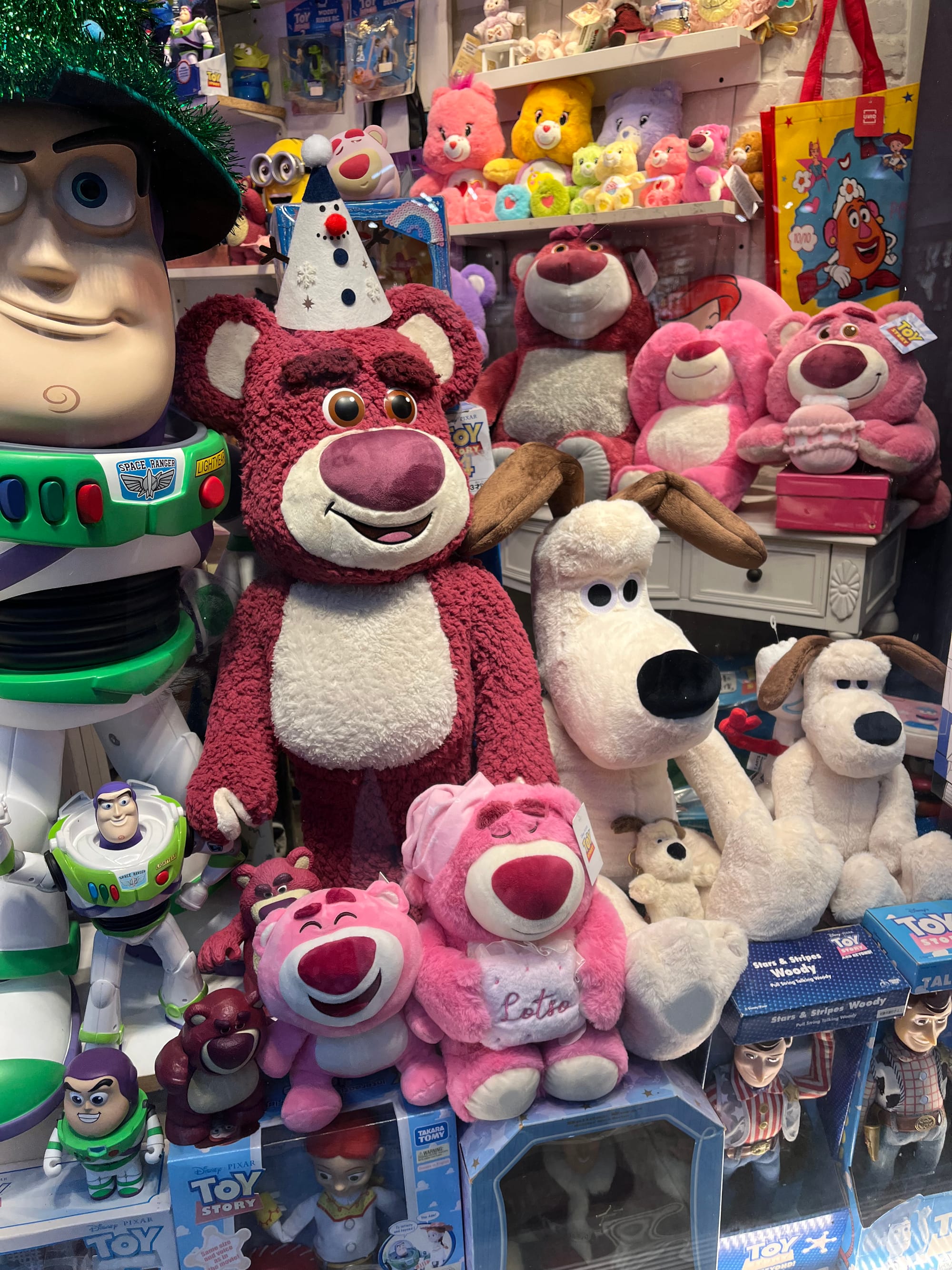
Your eyes are not deceiving you. That is Lots-o'-Huggin' Bear, also known as Lotso, the villainous (vaguely Southern?) bear from Toy Story 3. At virtually every night market I've been to in Taiwan, Lotso plushies are as voluminous as sticky rice sausage or stinky tofu.
I simply do not get it. Why does this creepy bear have a stranglehold on the Taiwanese subconscious? (My language partner, who is a student at National Taiwan University, had this theory: "He's cute!")
Am I the crazy one? Should we all be in on the Lotso craze? What am I missing here?
Odds and Ends:
The music I cannot get out of my head lately:
- “這款自作多情/All That Wishful Thinking" by EggPlantEgg. This song is actually not a Mandarin song. It's sung in Taiwanese Hokkien, a language that originated in Southern China, but as I mentioned in last week's newsletter, remains a popular spoken language for many Taiwanese people today.
- "TSUNAMI" by Southern All Stars. I don't know enough about Japanese music to know if this band is super lame or not—they do have a Dad rock thing going on—but this song kinda slaps!
- "Ghost in this House" by Alison Krauss. Before going to Japan, I spent some time with friends in Tainan and Kaohsiung, two cities in the southern part of Taiwan. While in Kaohsiung, I took a ferry to Xiaoliuqiu, an island in the Taiwan Strait, with my (supremely talented) friend Sarah because she was commissioned to paint a house there. While on the island, we discovered a seaside cafe whose soundtrack seemed to consist entirely of Alison Krauss' Forget About It. Consider me a fan!
- "Red Date" by LINION. This is a sweet, sad song by Taiwanese musician LINION, whose music I'd never listened to until I heard this song in the Taiwanese Netflix show, At the Moment. Each episode of the series tells a different, standalone love story.
2.
I am on hiatus from expending any emotional energy thinking about the professional basketball team in Philadelphia, but despite my best wishes, I've been informed that they employ one of the best basketball players on Earth.
And, well, when he drops 51 points on the team with the best defense in the NBA, I do have to pay some attention:
Will the 76ers flame out of the playoffs early like they always do? Yes. Will it probably be to their hated rivals, the Boston Celtics, again? Yes. But, darn, it is pretty fun to watch Joel Embiid play basketball.
With that, I am ready to enjoy the last few days of winter break before ringing in the New Year. Thanks, as always, for giving this newsletter a read. And please don't hesitate to reach out with any questions or pushback. (Except if you're a Celtics fan!)
